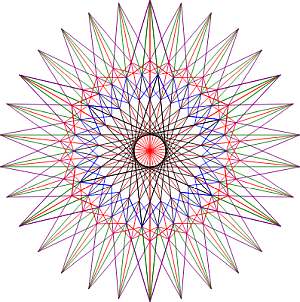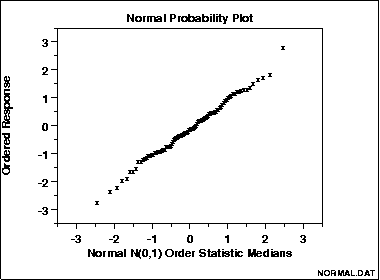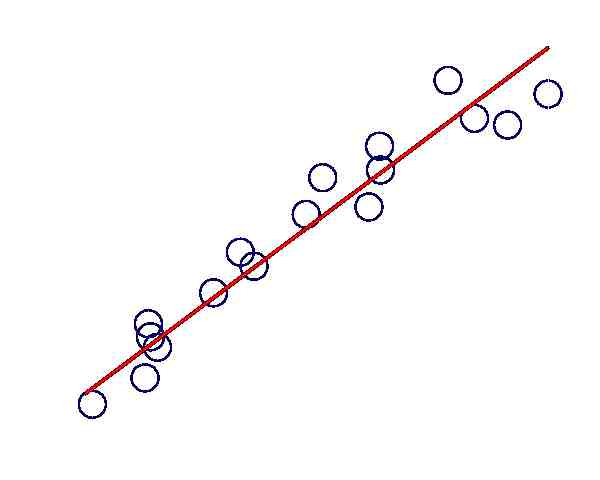Row Echelon Form Calculator
Instructions: Use this calculator to show all the steps of the process of converting a given matrix into row echelon form. Please type any matrix you wish to reduce.
Modify, if needed, the size of the matrix by indicating the number of rows and the number of columns. Once you have the correct dimensions you want, you input the matrix (by typing the numbers and moving around the matrix using "TAB")
Number of Rows = Number of Cols =Row Echelon Form Calculator
The row echelon form is a type of structure a matrix can have, that looks like triangular, but it is more general, and you can use the idea of row echelon form for non-square matrices.
This row echelon form calculator will take a matrix you provide, and will apply Gaussian elimination, showing all the steps, indicating the elementary matrices that are used.
What is the row echelon form?
The row echelon form in a matrix occurs if the first non-zero term in a row (sometimes called the leading term) is always to the left of the first non-zero term that is below. This idea helps us depict the respective lead terms of the rows as a echelon sequence in an inverted stair case.
What can you use row echelon form of a matrix form?
- It may simplify the computation of determinants
- It can help you solve systems of linear equations
- It can facilitate some matrix decompositions

How do you calculate row echelon form?
This echelon form calculator can serve many purposes, and there are different approaches that are possible.
But the main idea is to use non-zero pivots to eliminate all the values in the column that are below the non-zero pivot, a process sometimes known as Gaussian Elimination. The following steps should be followed:
Step 1: Check if the matrix is already in row echelon form. If it is, then stop, we are done.
Step 2: Look at the first column. If the value in the first row is not zero, use it as pivot. If not, check the column for a non zero element, and permute rows if necessary so that the pivot is in the first row of the column. If the first column is zero, move to next column to the right, until you find a non-zero column.
Step 3: Use the pivot to eliminate all the non-zero values below the pivot.
Step 4: After that, if the matrix is still not in row-echelon form, move one column to the right and one row below to look for the next pivot.
Step 5: Repeat the process, same as above. Look for a pivot. If no element is different from zero at the new pivot position, or below, look to the right for a column with a non-zero element at the pivot position or below, and permutate rows if necessary. Then, eliminate the values below the pivot.
Step 6: Continue the pivoting process until the matrix is in row-echelon form.
How do you calculate row echelon on a calculator?
Not all calculators will conduct Gauss-Jordan elimination, but some do. Typically, all you need to do is to is to input the corresponding matrix for which you want to put in RREF form.
This calculator will allow you to define a matrix (with any kind of expression, like fractions and roots, not only numbers), and then all the steps will be shown of the process of how to arrive to the final reduced row echelon form.
This calculator works as an elementary row operations calculator, and it will show you exactly which elementary matrices are used in each step.

Example: Calculation of row echelon form of a matrix
Question: Consider the following matrix:
\[A = \begin{bmatrix} \displaystyle 2&\displaystyle 1&\displaystyle 2\\[0.6em]\displaystyle 3&\displaystyle 4&\displaystyle 1\\[0.6em]\displaystyle 1&\displaystyle 1&\displaystyle 1 \end{bmatrix} \]Compute its row-echelon form, showing the steps.
Solution: The provided matrix is a \(3 \times 3\) matrix.
We need to find a row echelon form of this matrix.
Step 1: Operations used to reduce column \(1\):
\((1) -\frac{3}{2} R_{ 1} + R_{ 2} \rightarrow R_{ 2}, \quad (2) -\frac{1}{2} R_{ 1} + R_{ 3} \rightarrow R_{ 3}\)
Step 2: Operation used to reduce column \(2\):
\((1) -\frac{1}{5} R_{ 2} + R_{ 3} \rightarrow R_{ 3}\)
and we have arrived to the row echelon form of the given matrix.
Hence, we conclude that the matrix in row echelon form is:
\[ \begin{bmatrix} \displaystyle 2&\displaystyle 1&\displaystyle 2\\[0.6em]\displaystyle 0&\displaystyle \frac{5}{2}&\displaystyle -2\\[0.6em]\displaystyle 0&\displaystyle 0&\displaystyle \frac{2}{5} \end{bmatrix} \]


